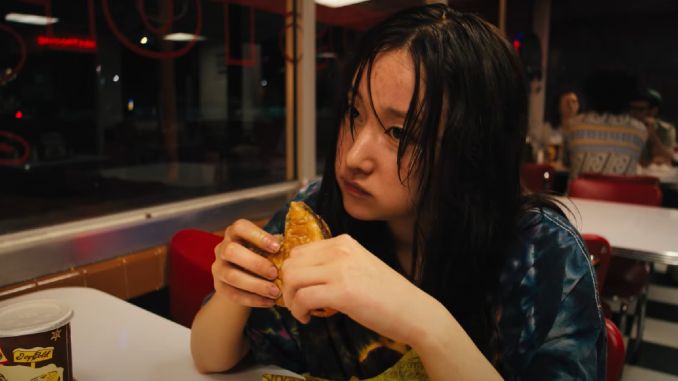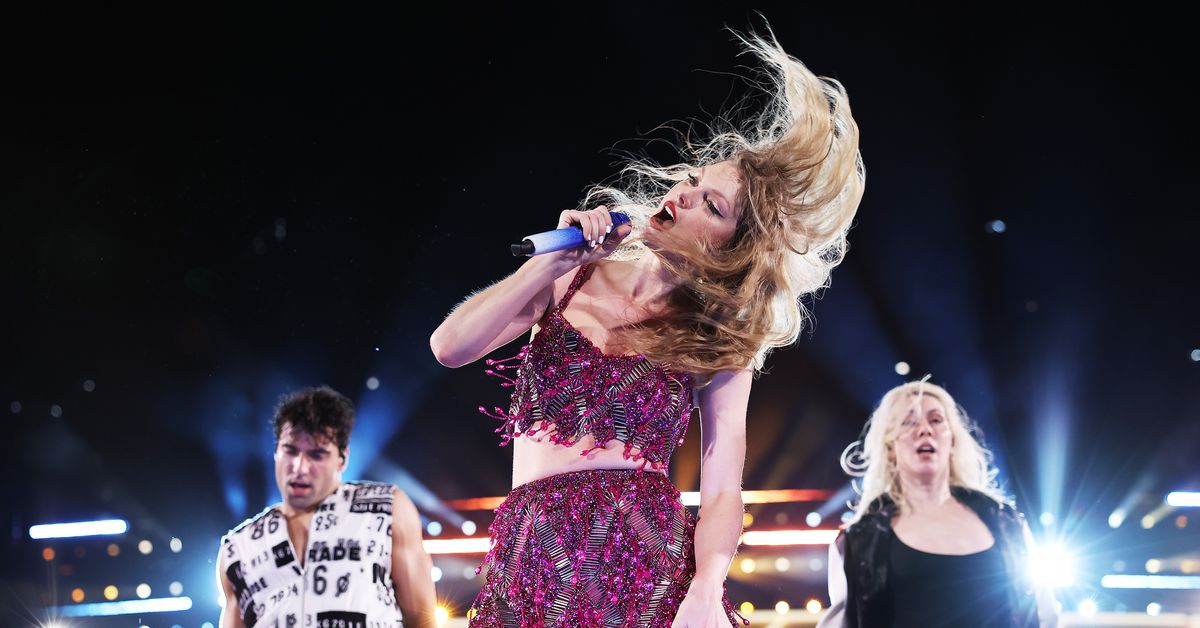
Hypnotic Heroism and Ana Lily Amirpour’s Autuerism Paint Mona Lisa and the Blood Moon
Very few things rival the mysticality of a full moon. In astrology, literature and art, the celestial body has stood as a symbol of pine femininity, heightened power and one becoming self-enlightened or fully realized. In Mona Lisa and the Blood Moon, writer/director Ana Lily Amirpour adds a genre twist to these symbolic meanings by unleashing her hypnotic protagonist into the energizing light of a fiery red moon. Her punchy follow-up to The Bad Batch entwines threads of horror, thriller, fantasy, comedy and drama to stitch together a trippy tapestry of New Orleans’ French District.
In this neon-drenched depiction of the Big Easy, Mona Lisa Lee (Jeon Jong-seo) is a curious mindcontroller learning about the depths of human interactions, her supernatural powers and cheese puffs. After all, she has just spent the last 10 years confined by straitjacket in a home for mentally insane adolescents. When Mona Lisa comes to the aid of Kate Hudson’s Bonnie Belle in a hilarious encounter outside of a late-night burger joint, the two strike up a volatile friendship that leads them down a criminal path.
Hudson’s take on the pole-dancing single mother possesses all the moxie and absurdity of her 2000s roles—How to Lose a Guy in 10 Days, Bride Wars, Raising Helen—with the raunchiness turned up to 100. Through Bonnie Belle, Amirpour fleshes out an interest she only hazily explored in her two previous films: The impact her seedy underworlds have on children, society’s most vulnerable. Mona Lisa sees Bonnie’s son Charlie Belle (Evan Whitten) take a narrative front seat alongside Mona and his mother. Where the messaging in Amirpour’s films tends to be more subliminal—allusions to the American Dream and Americana imagery scattered throughout her Bad Batch hellscape; the vigilantism of a female killer hunting men who hurt women in A Girl Walks Home Alone at Night—here, her admiration for the resilience of children in the face of adversity becomes crystal clear.
What Mona Lisa helps illuminate are Amirpour’s signatures. It highlights the filmmaker’s flair for vicious worldbuilding through its playful use of lighting, soundtrack and character. Like her imaginary communities of Bad City and Comfort, Amirpour’s New Orleans is unsavory. Men disrespect women, drunk partygoers barf all over sidewalks and jealous girlfriends beat up on people who look at their significant others funny. These repugnant displays are often set to the electronic beats of Italian composer Daniele Luppi and doused in colorful fluorescent lights. The rave-like music and aesthetics recall Bad Batch’s brutal cannibalistic community and create an atmosphere of fantastic anarchy. Through another of these sleazy towns walks another mysterious and morally ambiguous female character existing on the outskirts. These women—previously including a skateboarding vampire and a half-eaten societal reject—seem to be extensions of Amirpour, but also ambivalent vessels for us to latch onto and through which to observe the insanity of her lawless worlds.
Now, Amirpour gives us Lee, her arthouse answer to the ubiquitous superhero figure. The Korean asylum seeker escapes the unjust confinement of backwards psychiatric hospitals, makes fools out of city cops and gets people to follow her every command using only her mind and body. Throughout Mona Lisa, she achieves a number of supernatural feats, perhaps the greatest of them all being wandering the grimy city without fear of falling prey to the typical dangers that threaten lone women walking through the night. Unlike Bonnie, Lee doesn’t have to constantly look over her shoulder while trekking down a dimly lit street or worry about being catcalled, kidnapped or assaulted while on a midnight stroll. She doesn’t have to think twice about the wacky dude talking her up at the liquor store, because she is in complete control of the characters and situations around her. Her superheroic presence ironically grounds the film and adds tangible meaning to what would otherwise be a more surface-level, style-driven work. In a post-2020 America, where the pandemic has fueled a rise of anti-Asian hate crimes and gendered violence against AAPI women is as rampant as ever, Lee makes something as mundane as a late-night walk a powerful sight to behold.
Mona Lisa and the Blood Moon puts Lee on a quest for self-discovery, while similarly seeing its writer/director finalizing her auteurist voice. Maintaining the same DIY, indie spirit that made Amirpour’s first feature so dreamy, while offering a pick-up in pace and more cohesive plot than her recherché sophomore effort. With Mona Lisa, Amirpour officially graduates from her position as an “up-and-coming” voice to a full-fledged genre auteur. However you title her, her hyper-stylized explorations of gender-based violence, punky female protagonists and obvious love for her craft make her one to keep watching.
Director: Ana Lily Amirpour
Writer: Ana Lily Amirpour
Starring: Jeon Jong-seo, Kate Hudson, Craig Robinson, Evan Whitten, Ed Skrein
Release Date: September 30, 2022
Kathy Michelle Chacón is a Gen-Z writer, academic and filmmaker based in sunny California. When she’s not writing for Paste, Film Cred or Kathychacon.com, you can find her eating pupusas, cuddling with her dog Strawberry or sweating her face off somewhere in the Inland Empire.










































































